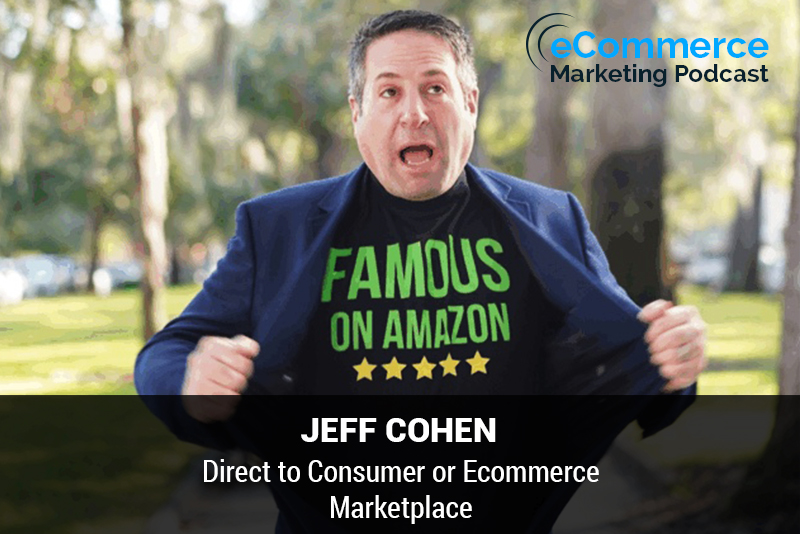
The eCommerce Marketing Podcast walks you through everything that goes into ecommerce marketing — from inbound marketing to paid advertising to conversions. Learn the strategies top marketing experts use to grow their businesses.
Marketing Strategies Revealed in this Episode:
- Overview of direct to consumer selling and ecommerce marketplace selling
- How does an ecommerce business effectively track data? What tools and resources are required?
- The advantages of selling direct to consumer
- The advantages of selling on an ecommerce marketplace
- The disadvantages of selling across multiple platforms
- Resources required when doing multi-channel selling

Episode Title: Direct-to-Consumer Sales vs. Selling on Marketplaces with Jeff Cohen
Host: Arlen Robinson
Guest: Jeff Cohen, VP of Marketing at Seller Labs
In this episode of the eCommerce Marketing Podcast, Arlen Robinson speaks with returning guest Jeff Cohen about the pros and cons of direct-to-consumer (DTC) sales versus selling on marketplaces. Jeff, with over a decade of eCommerce experience, shares valuable insights on how brands can navigate these channels to optimize their sales and grow their business.
Key Takeaways:
- Introduction and Jeff’s Background (00:20)
- Jeff shares his journey in eCommerce from starting textbooks.com to becoming VP of Marketing at Seller Labs.
- Overview of DTC vs. Marketplaces (04:05)
- DTC involves direct transactions between the brand and consumers, while marketplaces like Amazon provide a platform for multiple sellers.
- Advantages of Marketplaces (08:10)
- Access to a large audience and existing trust of the marketplace.
- Simplified logistics and fulfillment through services like FBA (Fulfillment by Amazon).
- Getting Started on Marketplaces (12:45)
- Research which marketplaces align with your product and target audience.
- Understand the marketplace fee structures and shipping requirements.
- Disadvantages of Marketplaces (18:20)
- Lack of direct customer interaction and ownership.
- Dependence on marketplace policies and potential high fees.
- Pivoting and Strategy (24:10)
- Importance of flexibility and being prepared to adapt to changes in marketplace policies and consumer behavior.
- Successful Brands on Both Channels (31:50)
- Examples like Casper and BarkBox show how brands can thrive both in DTC and marketplace channels.
- Essential Tools and Resources (36:15)
- Emphasis on having a strategic plan and investing in flexible software that can scale with your business.
- Fun Fact about Jeff (39:45)
- Jeff enjoys tasting different scotch whiskies and bourbons, and emphasizes the importance of creating mental space by enjoying outdoor activities like biking.
Jeff Cohen is the VP of Marketing at Seller Labs, an eCommerce solutions company that helps brands optimize their presence on Amazon and other marketplaces.
Contact Jeff Cohen:
- LinkedIn: Jeff Cohen
- Company: Seller Labs











